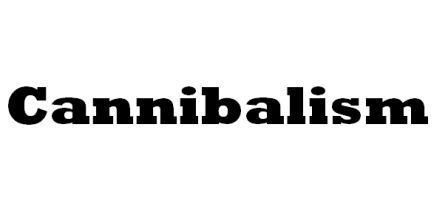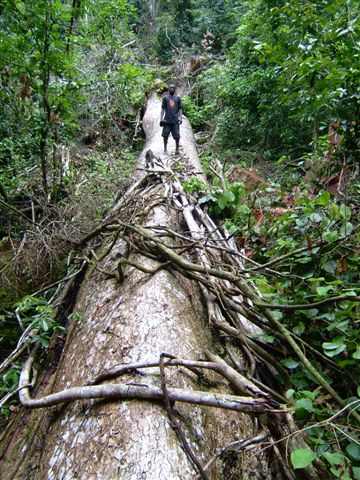How Sierra Leone could have lost richest Forest Reserve
Reports reaching Sierra Express Media reveal that between 2005 and 2007 two mining licenses were issued for diamond and iron ore prospecting in the Gola Forest Reserve in south-eastern Sierra Leone. The licenses were granted even though the area was a proposed national park. It is likely that the allocation of the licenses contravened Sierra Leonean law. Findings show that there was minimal consultation with residents and the whole process was characterised by a worrying lack of transparency.
The Gola Forest is one of the world’s most biodiversity-rich ecosystems studies has shown; but if mining were to have taken place, it would have been devastating for the environment. Furthermore, there were no guarantees that the residents of the area would gain sufficient economic benefits once mining began. Luckily, intervention from the President of the Republic Dr. Ernest Bai Koroma and the subsequent launch of the Transboundary Peace Park in May 2009 meant that to date, nothing has happened as a result of the licenses and the immediate threat to Gola has been averted. However, the fact that the licenses were allocated in the first place points to broad deficiencies in natural resource governance in Sierra Leone which must be addressed if the country is to develop sustainably and improve the lives of its citizens.
Natural resources were key to funding the civil war in Sierra Leone between 1991 and 2002. This conflict saw many thousands killed or maimed by the rebel group, the Revolutionary United Front (RUF), whose signature terror tactics included chopping off limbs and recruiting child soldiers. During the war, the RUF fought for control of alluvial diamond fields in eastern Sierra Leone, and smuggled the diamonds through Liberia, Guinea and Côte d’Ivoire. The fighting became oriented around control of the diamond fields. It is estimated that towards the end of the conflict, the RUF was earning between US$25 and US$125 million annually from diamonds.
It is this history that makes it so important that future natural resource governance is done well in Sierra Leone. Following the war, the government and donors made efforts to reform the natural resources sector. Despite these efforts, it is still characterised by weak governance, a lack of transparency, and irregularities in the allocation of licenses. What happened in the Gola Forest Reserve provides a useful case study to highlight the continued failings and the need for reform.
The current political circumstances in the country favour reform and represent an opportunity that must not be missed. A new Mines and Minerals Act was signed by the President on 30 December 2009 and the Government is currently reviewing mining agreements, including contracts and licenses a Global Witness visited Sierra Leone in November 2009 and interviewed a range of stakeholders including donors, government officials, non-governmental organisations, journalists, town leaders, elders and community members in the Gola region and Freetown. These interviews form the basis of this case study. This case study aims to provoke a debate on the problems that led to the allocation of these licenses and ensure that lessons are learnt for the future and other mineral rights. Â Donor countries have been providing support to the government to reform mining, forestry and agricultural sectors. Â These reforms are partly due to conditions set by the World Bank and IMF in December 2006 under the Heavily Indebted Poor Countries (HIPC) Initiative.
For example, the UK DFID has provided two million pounds over two years to support the management of and institutional capacity in the Ministry of Mineral Resources, and DFID-funded consultants helped the Government to finalise the new Minerals Act, draft new regulations and implement a project on civil service reform in the ministry. In December 2008, USAID began funding a two year project to improve policy making in the mining, forestry and agriculture sectors.
Governor’s order number nine of 1926 set up the Gola Forest East as a forest reserve. Gola Forest North extended the reserve in 1930 through order number five. Between 1926 and 1930 Gola Forest West was also designated. In 1956, the Gola Forest was extended by two forestry ordinances (extensions one and two). Between 1956 and 1963 further extensions were added to Gola North. On 15 April 1977, the Siaka Stevens Government signed a joint venture with Sierra Leone Timber Industry and Plantation Company Limited to log the Gola Forest East and Gola Forest West Forest Reserves. The concession was for a period of twenty five years but Global Witness was told it ceased in 1979.
Gola Forest Programme, Government of Sierra Leone, ‘Gola Forest Reserves: the proposed Gola Forest National Park, Management Plan 2007
In Kailahun District it includes Malelma chiefdom and Nomo chiefdom. In Kenema District it includes Gaura chiefdom, Tunkia chiefdom and Koya chiefdom. In Pujehun district it includes Makpele chiefdom and Barrie chiefdom.
If the Government of Sierra Leone, with the support of donors, does address the issues outlined here it would increase the likelihood of investment by reputable companies, thereby boosting economic development. It would also increase the country’s prospects for long-term stability. Conversely, if unresolved, these deficiencies have the potential to eat into development opportunities for the country and could undermine democracy and the rule of law.
The Gola Forest is approximately 750 square kilometres. It is the largest area of lowland rainforest left in Sierra Leone and is one of the world’s most biodiversity-rich ecosystems.3 It is part of the remaining 30% of the Upper Guinea Forest that used to reach across West Africa, from Togo in the east, to Guinea in the west. The Gola Forest Reserves were originally designated between 1926 and 1930 with extensions added between 1956 and 1963. Today, the Gola Forest Reserve is divided into four forest blocks and encompasses seven chiefdoms. It is managed by the Gola Forest Programme, a government-civil society partnership.
Despite Gola’s environmental importance, and the efforts of the Gola Forest Programme to make it a national park, two mining licenses were allocated between 2005 and 2007 for diamond and iron ore prospecting. The most contentious and potentially most damaging license was the exclusive prospecting license (EPL) for iron ore in the Bagla Hills area of Gola granted in 2005 to SL Minerals. The second license was granted in 2007 to Target Resources, who were awarded an EPL that overlapped with the Gola North Forest Reserve.
A third EPL for the Gola Reserve was applied for in 2006 by Sierra Diamonds (now Stellar Diamonds). The company had obtained a regional license two years before, which encompassed parts of Gola. A number of sources told Global Witness (in 2009) that Stellar Diamonds was awarded the EPL. However when Global Witness wrote to the company it responded by saying that the EPL had been blocked by the Director of Forestry and never awarded.
Due to a lack of transparency and coordination within the government, the Gola Forest Programme was not initially aware of the issuing of licences in Gola, despite being mandated to manage the reserve.
Key players in the Gola Forest saga
The Gola Forest Programme has been operational since the early 1990s. The Programme is a partnership between the Conservation Society of Sierra Leone, Royal Society for the Protection of Birds (RSPB) and the Forestry Department of the Sierra Leone Government. The dominant player is the RSPB. The reserve was briefly closed during the war and re-launched in November 2006. The Gola Forest Programme has rehabilitated the Gola reserve, established management structures and also negotiated with different parts of the Government and other relevant powerful political players to try to ensure its survival. Since its inception, the Gola Forest Programme has been working to make the reserve into a national park. To ensure local support in 2003, the Gola Forest Programme undertook a two and a half year consultation, including meetings with local communities. In 2007, agreements were signed with communities that granted them material and financial benefits and allowed them the right to participate in the day to day management of the forest. This seems to have had mixed results. While some community members are involved in the management of the forest, the wider community does not always feel involved or empowered.
SL Minerals Limited
SL Minerals Limited was incorporated in January 2004 in the United Kingdom, with 100% of its shares owned by Njahili Resources. In September 2005, the company was issued an EPL for iron ore mining in the Bagla Hills of Gola East Reserve. In 2009, Njajhili Resources Plc was placed into liquidation as part of a restructuring of the company. Following the restructuring process, CIC Mining Resources Limited acquired SL Minerals. This change in ownership was completed on 1 October 2009. The Bagla Hills EPL is currently held by SL Minerals Plc, which in turn is 100% owned by IMG Group Limited (Hong Kong). IMG Group Limited (Hong Kong) is a 100% owned subsidiary of CIC Mining Resources Limited. Â Â
In May 2009, CIC Mining Resources announced a US$110 million investment in the Bagla Hills project by Benxi Steel Group, a private Chinese iron ore mining company and major shareholder in CIC, and acknowledged that environmental approvals would be required before the start of any on-site development. CIC Mining Resources Ltd provided Global Witness with a memorandum which stated that CIC would not progress to mining and processing in Bagla Hills until the local chiefdoms agreed and the Government of Sierra Leone and interest groups officially engaged CIC to develop the area. They promised revenue from production would be used to protect the Gola Reserve, a comprehensive environmental study would be done in advance, and that production in the Gola Forest Reserve would be minimal with all processing and accommodation for company staff situated outside of the Reserves boundaries.
In May 2009, Global Witness was told by the Director of Geological Surveys that the SL Minerals license had been revoked due to a default of payment and that the company had gone into liquidation. This was confirmed to Global Witness by the Director of Mines. Global Witness went to the Mining Cadastre Office which was established following the signing of the new Mines and Minerals Act to get a copy of the company’s license on 23 February 2010. The office said that they were unable to confirm whether this license was still valid, stating that the license was no longer on their database and that the license documents had been taken out the office by the Director of Mines. However, CIC Mining Resources Ltd told Global Witness that the license in the Bagla Hills was still valid.
Stay with Sierra Express Media for your trusted place in news!
© 2010, https:. All rights reserved.







forex robot
/
Keep posting stuff like this i really like it
28th February 2010